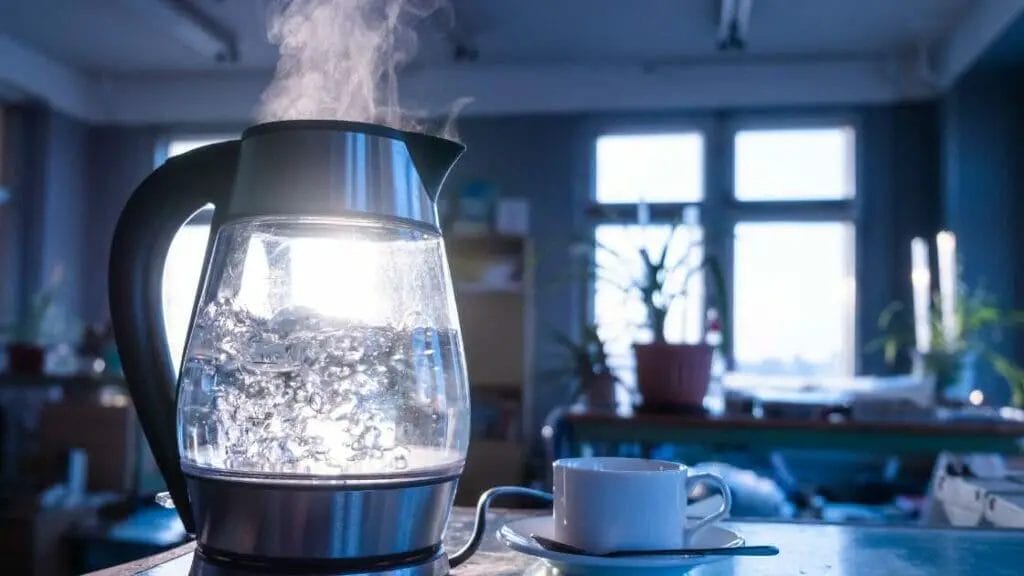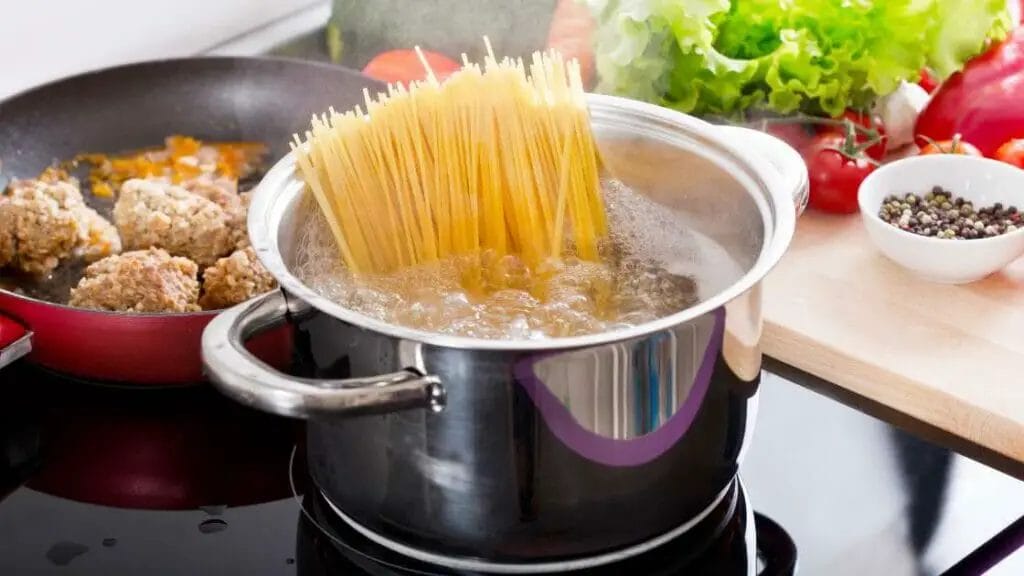Need to boil some water for your coffee or tea but want the kitchen free of any noise while you enjoy a quiet morning? How about making some pasta while your kids are still sleeping in a nearby room?

As necessary as it is for your daily routine and tasks, the noise that comes with boiling water can be a nuisance, especially if you’re trying to work or sleep in a nearby room.
If you’re tired of the loud hissing and bubbling sounds that come with boiling water, then you’ve come to the right place.
In this article, we’ll show you how to boil water quietly, so you can enjoy your hot beverages and meals without disturbing anyone else.
From selecting the right pot to controlling the heat, we’ll cover everything you need to know to boil water in peace. So, let’s get started and learn how to make some noiseless hot water!

Why Boil Water Quietly?
Boiling water quietly has several benefits beyond just reducing noise.
It can be particularly useful in situations where you need to maintain a calm environment, such as when someone is sleeping, working, or studying nearby.
Additionally, boiling water quietly can enhance your cooking experience by allowing you to focus on other aspects of your recipe without being distracted by loud noises.
The Science Behind Boiling Water
To understand how to boil water quietly, it’s important to know the science behind boiling.
When the water reaches its boiling point, the liquid turns into vapor and creates bubbles. The noise that we associate with boiling water comes from the bubbles bursting at the surface.
The larger and more vigorous the bubbles, the louder the noise.
The Equipment You Need
To boil water quietly, you’ll need the right equipment. Start by choosing a pot with a thick bottom and tight-fitting lid.
A pot with a thick bottom helps distribute heat evenly, while a tight-fitting lid helps trap steam and reduce noise.
Avoid using lightweight pots, as they tend to vibrate and make more noise during boiling.
Additionally, consider investing in a kettle with a noise reduction feature.
Some modern electric kettles come with built-in noise reduction technology, which can significantly reduce the noise produced during boiling.
Tips for Boiling Water Quietly
Now that you have the right equipment, here are some tips to help you boil water quietly:
- One of the main contributors to noisy boiling is excessive heat. Lower the heat to a simmer once the water reaches its boiling point. This will reduce the size and violence of the bubbles, resulting in a quieter boil.
- A heat diffuser is a metal plate that sits between the heat source and the pot. It helps distribute heat evenly, preventing hot spots and reducing the noise caused by uneven boiling.
- Using a lid while boiling water not only helps trap steam and heat but also dampens the noise. Make sure the lid is tight-fitting to maximize noise reduction.
- A larger pot provides more surface area for the bubbles to disperse, resulting in a quieter boil. Avoid filling the pot to its maximum capacity, as this can increase the chances of water spilling over and causing noise.
- Starting with cold water instead of hot water can help reduce the noise produced during boiling. Cold water takes slightly longer to reach its boiling point, allowing for a gentler boil.
Alternative Methods for Boiling Water Quietly
If you’re looking for alternative methods to boil water quietly, consider the following options:
- Use an electric kettle: Electric kettle are designed to boil water quickly and quietly. Look for models with noise-reduction features for an even quieter experience.
- Use a microwave: While not the traditional method, microwaving water can be a quiet and efficient way to boil it. Use a microwave-safe container and follow the manufacturer’s instructions for heating water.
- Utilize a hot water dispenser: If you have a hot water dispenser, this can be a convenient and noiseless way to get hot water instantly without the need for boiling.

Recipes That Require Boiling Water Quietly
Now that you know how to boil water quietly, here are some delicious recipes that you can try:
- Quietly Boiled Green Tea: Brew a soothing cup of green tea without the noise of a traditional boil. Steep the tea leaves in water heated using one of the quiet boiling methods discussed earlier.
- Noiseless Pasta: Boil pasta in a pot with a tight-fitting lid and controlled heat. Enjoy a quiet cooking experience while preparing your favorite pasta dishes.
- Gentle Boiled Eggs: Place eggs in a pot with cold water and bring it to a quiet boil. Follow your preferred method for achieving the desired level of doneness.
Frequently Asked Questions
- Q: Is it safe to boil water with a lid on?
A: Yes, it is safe to boil water with a lid on. Just make sure to use a pot with a vented lid or slightly offset the lid to allow steam to escape and prevent the pot from boiling over. - Q: Can I use a slow cooker to boil water quietly?
A: While a slow cooker can be used to heat water, it’s not the most efficient method for boiling water quickly. It is better suited for simmering and slow cooking. - Q: Can noiseless boiling affect the taste of the water or food?
A: No, boiling water quietly does not affect the taste of the water or food. It simply reduces the noise produced during the boiling process.
Safety Precautions
When boiling water, it’s important to follow these safety precautions:
- Always use oven mitts or pot holders when handling hot pots or kettles.
- Keep children and pets away from the boiling water to prevent accidents.
- Avoid overfilling the pot to prevent hot water spills and burns.
- Turn off the heat and unplug electric kettles when not in use.